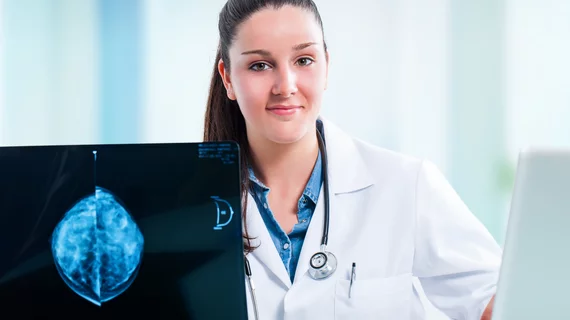Radiologists prefer stationary DBT to mammography, study finds
Stationary digital breast tomosynthesis (sDBT) improved radiologists’ accuracy in detecting malignancies and was favored over mammography, reported authors of a Jan. 16 study published in Academic Radiology.
“This initial clinical experience with this prototype sDBT system is encouraging, as readers preferred sDBT over mammography when interpreting soft-tissue breast features and were more likely to identify malignancy correctly using images generated by sDBT,” wrote first author, Yueh Z. Lee, MD, PhD, of the University of North Carolina at Chapel Hill, and colleagues.
In the study, 43 women with a BIRADS 4-defined “suspicious abnormality” underwent digital mammography and sDBT, which does not require moving the x-ray tube like traditional DBT machines. Twelve women had malignant cases, as defined by pathological results, and four breast radiologists read all imaging results.
Overall, the mean areas under the receiver operatic characteristic curve was “significantly” higher for sDBT (mean of .71) than mammography (mean of .68) for all breast categories and thicknesses, the authors wrote. Radiologists also preferred sDBT over mammography when analyzing mass margins and shape, architectural distortion and asymmetry, but preferred mammography for characterizing microcalcifications.
The latter preference has been a continuous challenge in replacing standard 2D mammography with DBT, Lee and colleagues wrote. Future design changes that achieve a wider angle-span and allow operators to make adjustments for task-specific imaging may overcome this, and other obstacles faced by DBT.
“Reader preference for mammography when characterizing microcalcifications highlights the need for additional work to take full advantage of the unique benefits offered by the sDBT technology,” the group concluded. “As hardware and software optimization of the sDBT system continues, future studies will compare its performance to standard 2D mammography and available DBT systems to contextualize its clinical utility in the breast imaging arena.”

